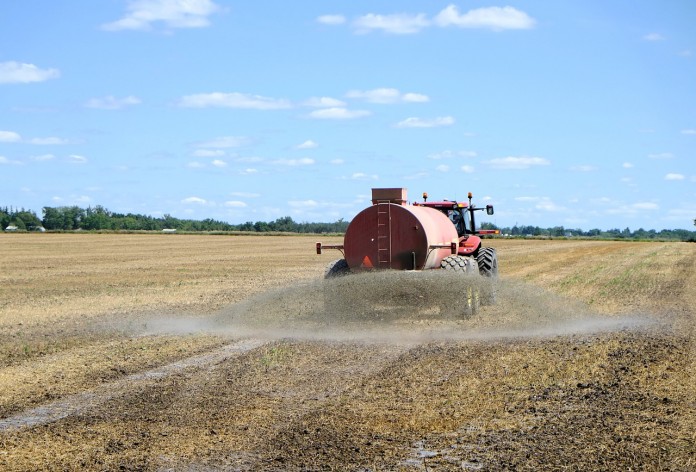Here in northeast Ohio, many welcomed the unusually warm and dry weather we’ve had in April. The dry weather allowed for anhydrous application, tillage, planting oats, and some courageous folks even planted soybeans. Pastures and forages made good use of the sunshine and warm temperatures to push out some green growth.
If you’re like me, you were not expecting the rapid growth of hay fields just yet and are a bit behind on fertilizing. It’s not too late to make those fertilizer passes.
Nitrogen
Nitrogen (N) application should be made during initial green-up to supply adequate nutrients for first cutting, so you should get N on your fields as soon as possible to get the most return. Total yearly application rates of 100 to 180 pounds of actual N provide good economic returns for cool season grass and mixed grass forage stands.
Highly productive stands may require higher rates, but a good rule of thumb is to apply approximately 45 pounds of N for every dry ton of forage expected. The total rate should be split into multiple applications to match the production of your forage stands. Typically, your first cutting grass crop will have the highest yield, therefore it will require more nitrogen than a subsequent crop.
Legume forages like alfalfa and clover can fix nitrogen from the atmosphere and pure stands will not need nitrogen fertilizer. If your older alfalfa stand is more grass than alfalfa, you may see a benefit of nitrogen application if grass makes up 70% or more of the field area.
Phosphorus
Phosphorus (P) fertilizer should be applied based on soil test results. If your soil test levels are in the maintenance range of 30-50 ppm, it is a sound strategy to apply crop removal rates to maintain phosphorous in your forage stands. Each ton of dry forage removes approximately 12 pounds of P 2 O 5, or 23 pounds of MAP (11-52-0). Using this method is relatively straightforward and will provide adequate nutrients for crop production.
Potassium
Potassium (K) fertilizer should also be applied based on soil test results. Studies from Wisconsin have found that there is no benefit to alfalfa or forage stands from excess K in the soils, and yields plateau when soil test K is between 120 and 140 ppm. When applied in excess, plants can take up K that does not result in an increase of yield — often called luxury consumption. Luxury consumption of K in the forage can result in high K levels of the harvested forage. This can cause milk fever in dry and recently fresh cows.
Managing the timing and rate of K fertilizer applications can help reduce luxury consumption. It is often suggested to apply potash (0-0-60) fertilizer after first cutting, and/or the last cutting in the fall and not more than necessary. Research from Purdue has demonstrated that fall K applications can help increase the winter hardiness and survival of alfalfa.
Forages are heavy users of K, and for every ton of dry forage harvested, you are taking approximately 49 pounds of K 2 O. That equates to 81 pounds of potash fertilizer that needs to be replaced. Many dairy farms rely on manure as a primary K fertilizer, but dairy manure does not typically have the concentrations of K to adequately replace what is usually removed during harvest. Potassium deficiencies may limit yields if additional fertilizer is not added to maintain proper soil test levels.
Fertilizer prices have dropped significantly in recent months but will remain a significant expenditure for your farm. Soil testing is always recommended to maximize crop production without applying more nutrients than necessary. Purchasing soil tests from your local ag retailer or extension office is a good investment with excellent returns.













